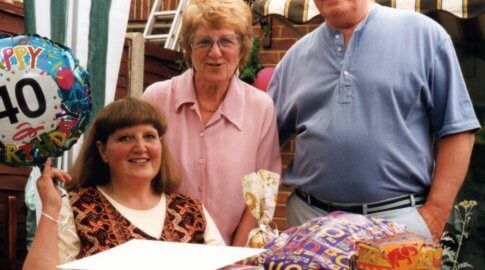Taking control of your treatment
Julia De Soyza, nurse specialist in pulmonary hypertension at the Freeman Hospital in Newcastle, is passionate about patient choice. Here, she discusses the importance of patients being involved in decisions about their treatment.
Across the UK, PH teams are dedicated to building relationships with patients – from diagnosis to treatment.
Having a good foundation for a relationship helps in the shared decision-making process and two-way conversation needed to enable healthcare teams to make a positive difference to patients’ lives.
Whichever specialist centre patients attend, visits to clinics are vital and it’s important to remember that PH teams are on the side of the patient.
People with PH deserve to be treated with dignity and respect, and this includes being involved in decisions about their treatment.
Therefore, it’s important for all healthcare professionals to respect that patients can make decisions about their care and choice of treatments, even if that doesn’t align with their professional view. Most people are capable and willing to be involved in deciding how they will be treated.
Shared decision-making involves spending time talking through all the options available to patients; the pros and cons of each treatment; and exploring patients’ ideas, values and expectations, and what’s important to them. It’s about working together and puts people at the heart of decisions about their own care and treatment.
A particularly difficult choice to make might be starting intravenous treatment for PH. Health professionals might tell the patient about the strong evidence for its use and that it increases survival, but it’s important to consider that IV treatment demands a lot of time and effort and can result in a significant burden for patients.
For patients to make an informed decision, the demands of treatment and its effects on wellbeing should be explored, along with the advantages.
Ultimately, some decisions may be a trade-off over quality of life versus length of life.
In the 2016 Living with PH survey, 86% of patients said the support they received from their specialist centre was ‘excellent’ or ‘good’. This statistic was encouraging but there’s still more we can do.
In my practice I’ve successfully used a shared decision-making model called the Ottawa Personal Decision Guide*. The questionnaire explores the options available to patients by considering four elements: knowledge, values, certainty and support.
The tool involves patients using stars to rate each treatment according to their understanding of the risks involved and the benefits that matter to them most. The process identifies their decision-making needs and how they feel about the choices available to them. They can either choose to make decisions alone or talk to a healthcare professional or family member. It gives patients control and ensures they feel involved. It is important patients are not pressured into a treatment and that they understand what it will involve.
The Ottawa Guide gives patients and medical professionals a chance to explore the options together.
The method takes into consideration what the patient knows best; their preferences, personal circumstances, values and beliefs, and what’s important to them. It does this while also considering what healthcare professionals know best: the risks and benefits of treatments and evidence surrounding their use.
As a healthcare professional, hearing about patient values that influence decisions is one of the most valuable aspects of using this tool. Patients I’ve used this with have told me they found the process really helpful.
















